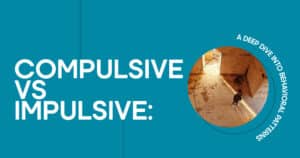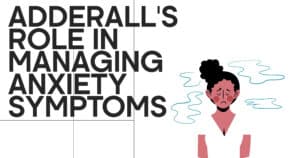Panic attacks can be incredibly distressing, characterized by sudden and intense fear accompanied by physical symptoms such as a racing heart, shortness of breath, and dizziness. Understanding how to manage and overcome these episodes is crucial for improving your quality of life. This guide will delve into practical strategies and insights to help you overcome panic attacks.
Understanding Panic Attacks
Panic attacks are often triggered by physical sensations, emotions, thoughts, or behaviors that elicit a fear response. This can create a cycle where the fear of having another panic attack leads to more frequent episodes. Recognizing the nature of these attacks is the first step toward managing them effectively.
The Panic Cycle
A typical panic cycle begins with an “event” (a thought, physical sensation, or situation) that triggers a fear response. This response causes the body to react with symptoms such as increased heart rate and dizziness, which can escalate into a full-blown panic attack if interpreted catastrophically. Understanding this cycle is essential for breaking it.
Strategies for Overcoming Panic Attacks
- Acknowledge and Accept
- Recognize that you are experiencing a panic attack and accept the symptoms without trying to fight them. Resisting a panic attack often intensifies the symptoms, whereas acceptance can help reduce their impact.
- Wait and Watch
- During a panic attack, pause and observe what is happening. Stay in the moment without taking immediate action to escape the situation. Keeping a panic diary to note your experiences can also be beneficial as it helps you analyze and understand your symptoms better.
- Educate Yourself
- Understanding the nature of panic attacks can significantly reduce your fear of them. Educate yourself about the symptoms and what happens to your body during an attack. This knowledge can demystify the experience and reduce the anxiety associated with the fear of future attacks.
- Change Your Response
- Instead of reacting to panic attack symptoms with fear, learn to respond with calmness and clarity. Techniques like deep breathing, mindfulness meditation, and positive affirmations can help shift your response. For example, repeating affirmations like “I can handle this” or “This will pass” can reinforce a sense of control during an attack.
- Gradual Exposure
- Gradually exposing yourself to the situations or sensations that trigger panic attacks can help desensitize your response over time. Start with small, manageable steps and slowly increase your exposure as you become more comfortable. This technique, known as systematic desensitization, is effective in reducing the frequency and intensity of panic attacks.
- Develop Coping Skills
- Building a toolkit of coping skills is essential for managing panic attacks. This can include practicing relaxation techniques such as yoga or progressive muscle relaxation, engaging in regular physical exercise, and maintaining a healthy lifestyle with adequate sleep and nutrition.
- Avoid Avoidance
- While avoiding situations that trigger panic attacks might seem helpful in the short term, it can reinforce the fear response. Instead, face these situations using the techniques mentioned above. Over time, this will help reduce the fear and anxiety associated with these triggers.
Professional Help and Resources
If panic attacks severely impact your life, seeking professional help is crucial. Cognitive Behavioral Therapy (CBT) is particularly effective in treating panic disorder. CBT helps identify and change negative thought patterns and behaviors that contribute to panic attacks. Additionally, medication may be prescribed in some cases to manage symptoms.
Finding a Therapist
- Finding a therapist who specializes in anxiety and panic disorders can provide you with personalized strategies and support. Websites like Psychology Today offer directories to help you find qualified professionals in your area.
Conclusion
Overcoming panic attacks involves a combination of understanding the nature of these episodes, changing your response to them, and developing effective coping strategies. By acknowledging and accepting your panic attacks, educating yourself, and gradually exposing yourself to triggers, you can regain control over your life. Remember, professional help is always available if you need additional support. Implementing these strategies can help you break free from the cycle of panic and live a more peaceful, fulfilling life.







